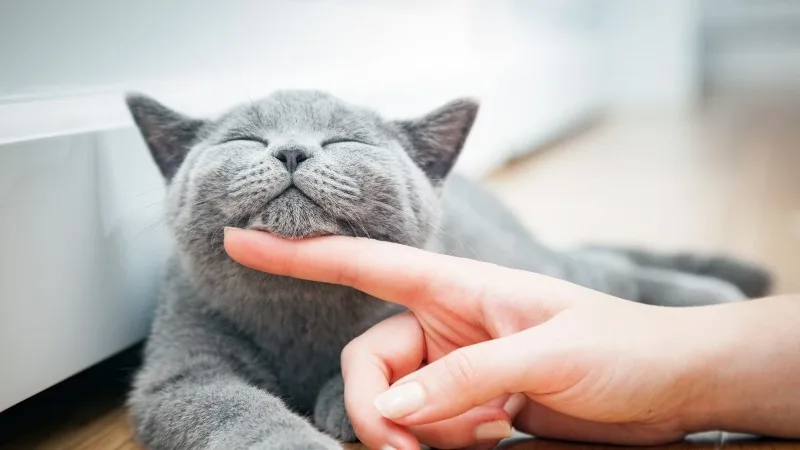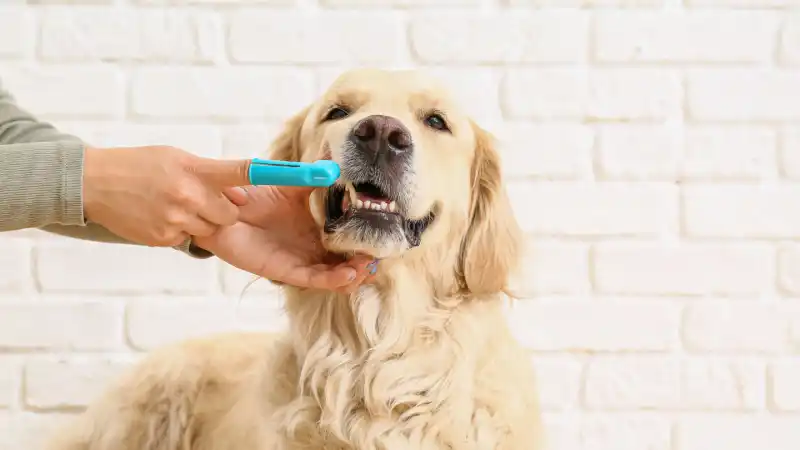Are Hairballs a Symptom of a Health Problem in Cats?
Cat hairballs can be normal, but blockages can be dangerous. Hairballs can be symptoms of bigger health problems. Read more for treatment & prevention.

If you're a cat owner, you've likely experienced the not-so-pleasant reality of dealing with hairballs. While the sight of your cat expelling one (and the clean-up effort afterward) may be gross, hairballs are normal for cats and a healthy part of their digestive process.
But while hairballs are a natural part of being a cat, they can sometimes be a sign of a deeper health issue. Read on to learn more about what causes hairballs and when (or if) you should be worried.
What Are Hairballs?
Your cat's tongue is lined with tiny structures shaped like hooks that are made from the same material as their claws: keratin. When your cat grooms themselves, the hooks on their tongue naturally pick up excess fur, as well as dirt and dander.
When your cat swallows the loose fur, the majority of it passes through their digestive tract without any issues. Some hair, however, can get trapped inside their stomach, forming what's scientifically referred to as a trichobezoar, or a hairball.
Despite their name, hairballs aren't shaped like balls at all. Instead, they're long, tube-shaped clumps that can resemble cat feces at a glance.
Symptoms of Hairballs in Cats
Because cats spend roughly 30-50% of their day grooming themselves, hairballs are inevitable. In fact, a normal, healthy cat will likely experience a hairball every 1-2 weeks, and long-haired cats can experience them a little more regularly.
When your cat has a hairball, typical signs include:
Gagging
Hacking
Vomiting
Once your cat has expelled the hairball, their symptoms should disappear, and they should return to their typical behavior.
If they don't, or if they're experiencing other symptoms or strange behavior, the hairballs could be a symptom of a deeper health issue. Here are 3 common causes for concern when it comes to hairballs in cats:
Dangerous Hairball Blockage in Cats
Your cat's fur is made from keratin, an indigestible material. When fur is ingested, most of it passes through your cat's digestive tract. But some can get left behind and accumulate in their stomach, eventually forming a hairball.
Unfortunately, the mass of hair forming in your cat's stomach can sometimes become too large for them to pass through their esophagus to expel. Large hairballs can become dangerous obstructions for your cat, keeping them from eating and breathing correctly.
Here are some common cat hairball blockage symptoms:
Gagging, as if with a hairball
Loss of appetite
Constipation
Diarrhea
Lethargy
Vomiting without ever producing a hairball
Contact your veterinarian immediately if your cat shows any of these symptoms. They will perform an X-ray to get a better look at the blockage and potentially recommend surgery.
Overgrooming
Cats are naturally clean animals, and grooming is a normal, healthy behavior for them. When your cat is stressed or sick, however, they may turn to overgrooming themselves as a way to manage their stress levels.
Signs of overgroominginclude:
Patchy fur
Redness, rashes, or scabs on bald areas
Irritability or discomfort while your cat scratches
Grooming often, even when it interrupts your cat's other activities
When your cat overgrooms, they can cause additional hair loss, which in turn leads to more hairballs. There are a variety of different reasons that your cat may be overgrooming themselves, but the most common reason is stress.
If your cat has had any changes to their environment recently like a move or new addition to the family, the overgrooming is likely a way for them to calm themselves. They may also be stressed from a lack of physical or mental stimulation.
Overgrooming can also be related to skin irritation. If your cat has fleas, allergies, or an infection, grooming can help them soothe their itchy skin. A trip to the vet can help determine the underlying cause of the problem.
Digestive Issues
If your cat is expelling hairballs more than the normal amount of once every 1-2 weeks, their digestive system could be backed up and not moving things through properly.
While your cat won't ever be able to digest the fur, a properly functioning digestive system will be able to move the fur through their gastrointestinal tract and out as waste.
If your cat is having digestive issues, that can affect the way they process their food, which can lead to other health conditions down the line. Check with your veterinarian if your cat is experiencing frequent hairballs.
4 Tips to Manage Your Cat's Hairballs
While there's no way to completely prevent your cat from experiencing a hairball, there are several ways you can help to minimize how many they experience.
Here are a few simple tips to manage your cat's hairballs:
1. Brush Your Cat Frequently
Brushing your cat's fur regularlyis one of the most beneficial things you can do for them. The more you brush your cat, the more excess hair you'll remove from their coat, preventing them from swallowing it while they groom themselves.
This also helps remove dirt and dander from their fur, reducing the amount of time they spend grooming themselves. In addition, regular grooming, especially for long-haired breeds, can help keep their coat looking shiny and healthy.
2. Feed Your Cat a Well-Balanced Diet
Nutrition can have a big impact on your cat's overall health. Without the right vitamins and nutrients in their diet, your cat's fur can look dull and shedding can increase.
There are many ingredients you can add to your cat's diet to help boost their coat health, lubricate their digestive tract, and reduce hairballs.
These include:
Pumpkin
Olive oil
Fish or fish oil
High-fiber cereal
3. Talk to Your Veterinarian to Determine the Underlying Cause
Always check in with your veterinarian if you notice any unusual behavior in your cat, such as an increase in hairballs. In many cases, your cat's hairball issues won't go away until you resolve what's causing them.
If stress is causing your cat to overgroom, you need to work on creating a calm environment where they can feel safe. One way to do this is by enriching their environment with toys, vertical spaces, and hiding spots.
If your cat is having an allergic reaction, your vet can help determine what they’re allergic to and which treatment options are available.
4. Use a Medical Remedy for Your Cat's Hairballs
If you've addressed the underlying causes of your cat's hairballs, but they're still not experiencing relief, there are a number of different medical hairball remedies you can try.
Hairball-specific cat food formulascan provide higher fiber and nutrient levels to improve your cat's digestive health. You can also try hairball laxatives, which help lubricate the hair in your cat's stomach, making it easier to pass. Talk with your veterinarian to determine the best option for your cat.
Should You Be Worried About Your Cat's Hairballs?
Because cats naturally spend almost half of their day grooming, a few hairballs every once in a while is perfectly normal and nothing to be concerned about. But if your cat is experiencing frequent hairballs or any of the other symptoms we've highlighted in this article, it's important to take them to the vet to rule out any underlying health conditions.
Pet insurance can provide financial support when it comes to routine veterinary care and health screenings. AKC Pet Insurance (underwritten by Independence American Insurance Company) offers an Exam add-on* that provides reimbursement for eligible exam fees and office visit charges, which can make regular vet appointments more affordable and help you keep up on routine pet care. Click here to create a custom plan fit for your cat and budget.
*Available at an additional cost.

Richard has shared his life with pets since childhood, and currently has a rescue cat and dog. He works with veterinarians and pet businesses to improve their content. To find out more, please visit his [website](https://richardrowlands.com/).
READ MORE ARTICLES

